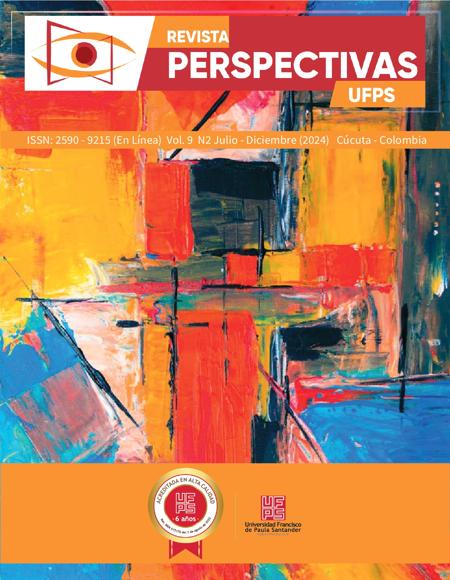Análisis de sentimientos sobre la percepción de la realización de clases remotas en la Uniagustiniana
Sentiment analysis on the perception of remote classes at Uniagustiniana
Contenido principal del artículo
En la Uniagustiniana se llevó a cabo una jornada de un día de clases remotas, con el fin de preparar a la comunidad académica en caso de que, por motivos de fuerza mayor, sea necesario realizar las actividades académicas en dicha modalidad. Para conocer la percepción de los estudiantes que se encuentran cursando asignaturas de ciencias básicas, en los diversos programas que ofrece la institución, se realizó una breve encuesta con metodología mixta, compuesta por varias preguntas cerradas para una escala de Likert, principalmente para determinar si los estudiantes cuentan con las condiciones adecuadas para tomar clases en modalidad remota, y con una pregunta abierta en la que los estudiantes pueden dar su opinión respecto a la jornada. Para determinar si la jornada fue exitosa, se analizan los comentarios realizados por los estudiantes y se implementa un análisis de sentimientos, se emplea el software Python ya que cuenta con librerías para el procesamiento del lenguaje natural en las que incorpora herramientas y diccionarios específicos para este tipo de análisis.
Descargas
Datos de publicación
Perfil evaluadores/as N/D
Declaraciones de autoría
- Sociedad académica
- Universidad Francisco de Paula Santander
- Editorial
- Universidad Francisco de Paula Santander
Detalles del artículo
Ahmed, M., Chen, Q., & Li, Z. (2020). Constructing domain-dependent sentiment dictionary for sentiment analysis. Neural computing and applications, 32, 14719-14732. https://doi.org/10.1007/s00521-020-04824-8 DOI: https://doi.org/10.1007/s00521-020-04824-8
Al-Said, K., Krapotkina, I., Gazizova, F., & Maslennikova, N. (2023). Distance learning: studying the efficiency of implementing flipped classroom technology in the educational system. Education and information Technologies, 28(5), 1-24. https://doi.org/10.1007/s10639-023-11711-x DOI: https://doi.org/10.1007/s10639-023-11711-x
Atteveld, W., Van der Velden, M., & Boukes, M. (2021). The validity of sentiment analysis: Comparing manual annotation, crowd-coding, dictionary approaches, and machine learning algorithms. Communication methods and measures, 15(2), 121-140. https://doi.org/10.1080/19312458.2020.1869198 DOI: https://doi.org/10.1080/19312458.2020.1869198
Bashir, A., Bashir, S., Rana, K., Lambert, P., & Vernallis, A. (2021). Post-COVID-19 adaptations; the shifts towards online learning, hybrid course delivery and the implications for biosciences courses in the higher education setting. Frontiers in education, 12(6), 1-13. https://doi.org/10.3389/feduc.2021.711619 DOI: https://doi.org/10.3389/feduc.2021.711619
Cerdas, V., González, G., Salas, S., & Villalobos, V. (2022). Presencialidad remota desde la perspectiva estudiantil y docente: un análisis de la División de Educación para el Trabajo de la Universidad Nacional, Costa Rica. Revista innovaciones educativas, 24(36), 101-116. https://doi.org/10.22458/ie.v24i36.3612 DOI: https://doi.org/10.22458/ie.v24i36.3612
Dhaoui, C., Webster, C., & Tan, L. (2017). Social media sentiment analysis: lexicon versus machine learning. Journal of consumer marketing, 34(6), 480-488. https://doi.org/10.1108/JCM-03-2017-2141 DOI: https://doi.org/10.1108/JCM-03-2017-2141
Ferro, L., Triana, J., & Mendoza, S. (2020). A geometric interpretation of the multiplication of complex numbers. Journal of physics: conference series, 1674, 012005. https://doi:10.1088/1742-6596/1674/1/012005 DOI: https://doi.org/10.1088/1742-6596/1674/1/012005
Haryadi, R., & Pujiastuti, H. (2020). PhET simulation software-based learning to improve science process skills. Journal of physics: conference series, 1521, 022017. https://doi:10.1088/1742-6596/1521/2/022017 DOI: https://doi.org/10.1088/1742-6596/1521/2/022017
Ho, I., Gho, H., & Tan, Y. (2022). Preprocessing impact on sentiment analysis performance on malay social media text. Journal of system and management sciences, 12(5), 73-90. https://doi.org/10.33168/JSMS.2022.0505 DOI: https://doi.org/10.33168/JSMS.2022.0505
Khoo, C., & Jhonkhan, S. (2018). Lexicon-Based Sentiment Analysis: Comparative evaluation of six sentiment lexicons. Journal of information science, 44(4), 491-511. https://doi.org/10.1177/0165551517703514 DOI: https://doi.org/10.1177/0165551517703514
Ligthart, A., Catal, C., & Tekinerdogan, B. (2021). Systematic reviews in sentiment analysis: a tertiary study. Artificial intelligence review, 54(7), 4997–5053. https://doi.org/10.1007/s10462-021-09973-3 DOI: https://doi.org/10.1007/s10462-021-09973-3
Majid, A., Huneiti, Z., Balachandran, W., & Al-Naafa, M. (2012). A Study of the effects of using matlab as a pedagogical tool for engineering mathematics students. 15th International conference on interactive collaborative learning (ICL), 1-9. https://doi.org/10.1109/ICL.2012.6402183 DOI: https://doi.org/10.1109/ICL.2012.6402183
Mercha, E., & Benbrahim, H. (2023). Machine learning and deep learning for sentiment analysis across languages: A survey. Neurocomputing, 531, 195-216. https://doi.org/10.1016/j.neucom.2023.02.015 DOI: https://doi.org/10.1016/j.neucom.2023.02.015
Núñez, L. (2022). Educación remota durante la emergencia por COVID-19. Análisis de la experiencia de los estudiantes universitarios. Revista Historia de la Educación Latinoamericana, 24(39), 231-255. https://doi.org/10.9757/Rhela DOI: https://doi.org/10.19053/01227238.12632
Okango, E., & Mwambi, H. (2022). Dictionary based global Twitter sentiment analysis of Coronavirus (COVID-19) effects and response. Annals of data science, 9(1), 175-186. https://doi.org/10.1007/s40745-021-00358-5 DOI: https://doi.org/10.1007/s40745-021-00358-5
Photopoulos, P., Tsonos, C., Stavrakas, I., & Triantis, D. (2023). Remote and in-person learning: utility versus social experience. SN computer science, 4(116), 1-13. https://doi.org/10.1007/s42979-022-01539-6 DOI: https://doi.org/10.1007/s42979-022-01539-6
Pillaca, E., Pérez, J., Ponce, J., Trasmonte, W., Matos, A., & Godenzi, J. (2022). Población estudiantil universitaria: percepción sobre la modalidad de clases en contexto de la COVID-19. Educação e Pesquisa, 48, 1-21. https://doi.org/10.1590/S1678-4634202248259404es DOI: https://doi.org/10.1590/s1678-4634202248259404es
Razali, N., Malizan, N., Hasbullah, N., Wook, M., Zainuddin, N., Ishak, K., Ramli, S. & Sukardi, S. (2021). Opinion mining for national security: techniques, domain applications, challenges and research opportunities. Journal of big data, 8(150), 1-46. https://doi.org/10.1186/s40537-021-00536-5 DOI: https://doi.org/10.1186/s40537-021-00536-5
Rincón, W. (2014). Preguntas abiertas en encuestas ¿cómo realizar su análisis?. Comunicaciones en estadística, 7(2), 139-156. https://doi.org/10.15332/s2027-3355.2014.0002.02 DOI: https://doi.org/10.15332/s2027-3355.2014.0002.02
Saberi, B. & Saad, S. (2017). Sentiment analysis or opinion mining: A review. International journal on advanced science, engineering and information technology, 7(5), 1660-1666. https://doi.org/10.18517/ijaseit.7.4.2137 DOI: https://doi.org/10.18517/ijaseit.7.5.2137
Saif, H., Fernández, M., He, Y., & Alani, H. (2014). On stopwords, filtering and data sparsity for sentiment analysis of Twitter. International conference on language resources and evaluation, 810-817. https://api.semanticscholar.org/CorpusID:1677808
Shaik, T., Tao, X., Dann, C., Xie, H., Li, Y., & Galligan, L. (2023). Sentiment analysis and opinion mining on educational data: A survey. Natural language processing journal, 2, 100003. https://doi.org/10.1016/j.nlp.2022.100003 DOI: https://doi.org/10.1016/j.nlp.2022.100003
Tucker, M., Shaw, S., Son, J., & Stigler, J. (2022). Teaching statistics and data analysis with R. Journal of statistics and data science education, 31(1), 18-32. https://doi.org/10.1080/26939169.2022.2089410 DOI: https://doi.org/10.1080/26939169.2022.2089410
Villaroel, V., Pérez, C., Rojas, C. & García, R. (2021). Educación remota en contexto de pandemia: caracterización del proceso educativo en las universidades chilenas. Formación universitaria, 14(6), 65-76. http://dx.doi.org/10.4067/S0718-50062021000600065 DOI: https://doi.org/10.4067/S0718-50062021000600065
Widmann, T. & Wich, M. (2022). Creating and comparing dictionary, word embedding, and transformer-based models to measure discrete emotions in German political text. Political analysis, 1-16. https://doi.org/doi:10.1017/pan.2022.15 DOI: https://doi.org/10.2139/ssrn.4127133








